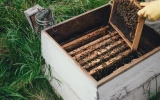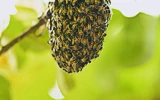How Bees Make Hives in the Wild (Trees & Ground Nest)
In the wild, bees make hives in various locations, including trees and ground nests. Let's explore the amazing places bees create hives.
Bees build their hive either on a hollowed tree or a spot in the ground. In trees, they start from the bottom and work their way up. On the ground, they either find a cavity or make their own. Then, they produce beeswax to support the foundation of the hive and store honey and pollen.
By reading this article, you'll learn why bees tend to build their nests in these locations. We also made a list of the signs tp look out for if you suspect that they are indeed making these locations their new home.
Summary
- Bees are able to make hives on trees by finding holes in them. They then make their way to the top by starting from the bottom part of the tree.
- Bees can make hives on the ground by creating a tunnel system.
- Trees provide a safe place for the bees to make beehives.
- Ground nests are a secure place for the bees to raise their young.
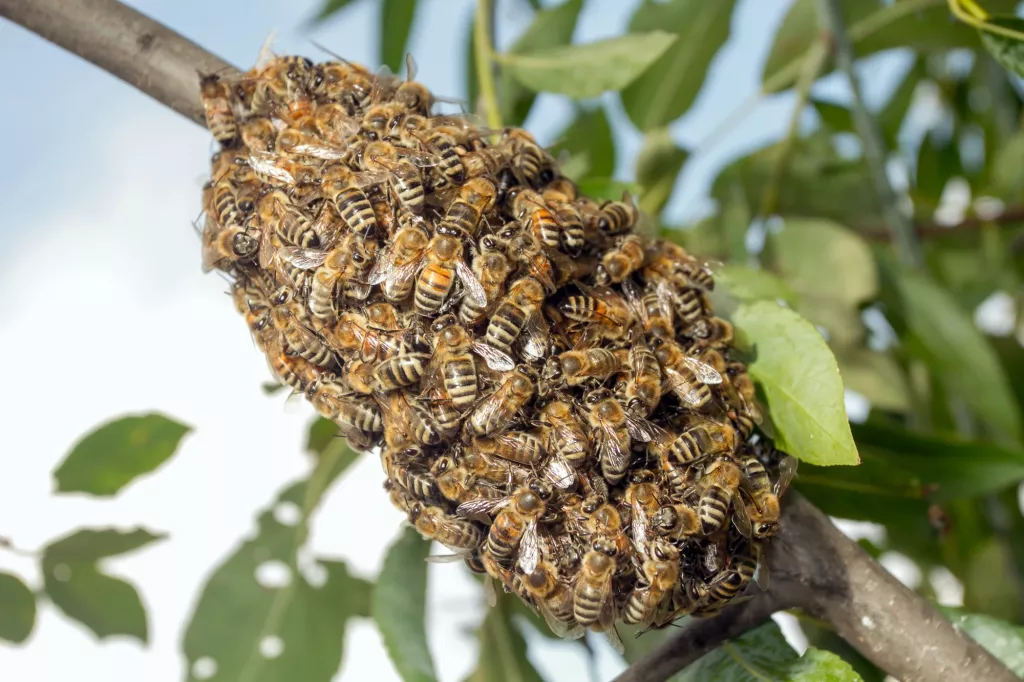
On this page:
The Hive-Building Process of Wild Bees
Bees make hives in the wild by creating colonies that work together to build a nest. Their hive-making process start by locating a suitable place to build the nest, typically in a tree hollow or on the ground. They then begin to construct the hive.
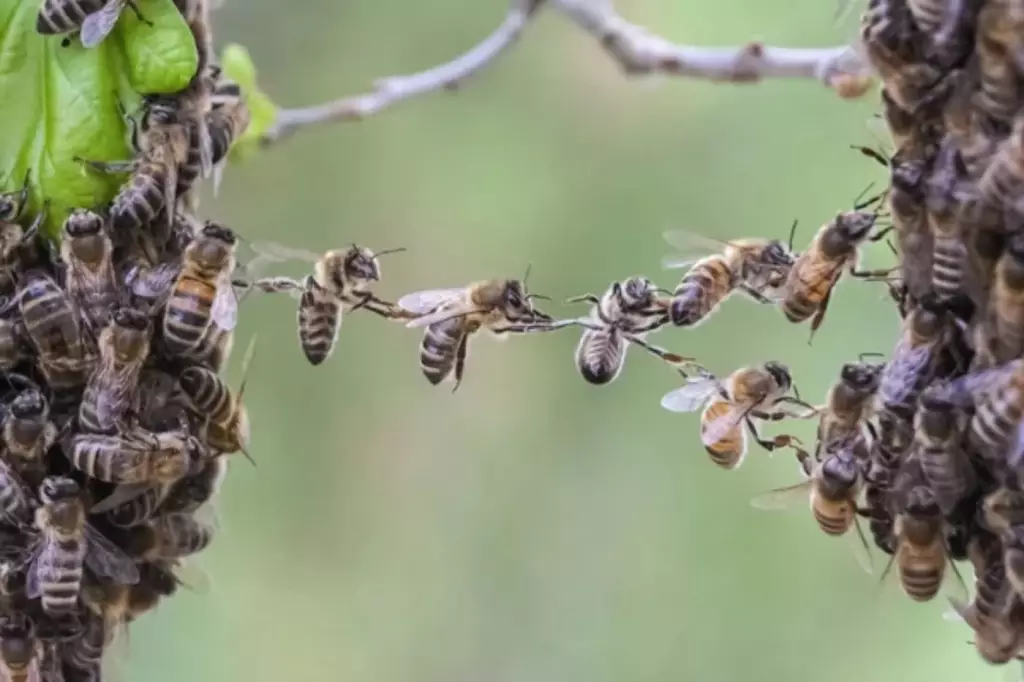
Worker honeybees are responsible for the construction of the hive. They start by producing wax flakes using their wax glands and then mix the flakes with saliva to create beeswax. The bees then mold the wax with their bodies into hexagonal cells arranged in a specific pattern. These cells are used to store honey, pollen, and other materials needed to support the hive.
Once the honeycomb is complete, the worker bees fill the cells with honey, pollen, and other materials. They also use the cells to store their eggs and larvae, which will eventually become adult bees. They then cap the cells with wax to seal them and protect the contents from contamination.
This entire process is repeated until the hive is full. The hive is important for the colony of bees, as it provides protection from predators, a place to store food, and a place for the queen bee to lay her eggs.
The hive also helps to regulate the temperature within the colony, keeping it comfortable for the bees to live and work. As the hive grows, the bees will add more cells and expand the size of the nest.
To get a more detailed visualization of this hive-making process, you can visit this article with a diagram of how bees make hives.
Bees Make Hives in Trees

Bees are well known for making their hives in trees.
- Bees will typically find a hollowed-out hole in a tree, or sometimes even make their own hole.
They usually start at the bottom and work their way up.
Once established, the bees will create a wax comb within the tree. This wax comb is where the bees will store their honey and lay their eggs.
The bees will also use tree resin to seal the hive, keep out predators, and keep the hive insulated. - To do this, the bees will gather tree resin from nearby trees and mix it with their saliva.
- This mixture is then used to create a seal around the hive.
- The bees will also create a ventilation system within the tree by creating small holes in the sides of the tree trunk, allowing air to move through the hive so that the hive stays at a suitable temperature.
Bees Make Hives on the Ground
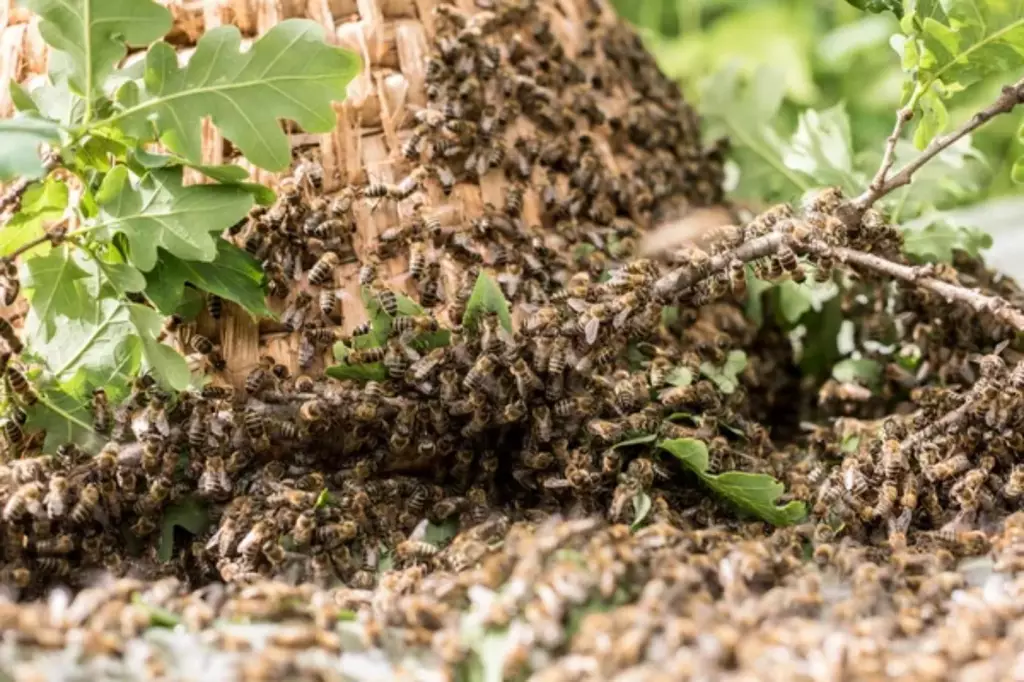
It's fascinating to watch bees build their hives in a ground nest because they do it so artistically.
- Bees construct underground tunnel systems to build their hives.
- The entrance to the tunnel system is usually near the bottom of the soil and forms a small mound of dirt.
- The bees will then excavate the soil to create a series of chambers that are connected by a series of tunnels.
- Each chamber is used for different purposes, such as storing food and housing the queen bee.
- These chambers are kept warm by the heat generated by the bees’ wings as they work.
- The entrance to the underground nest is usually a small hole in the ground, about the size of a quarter.
- This hole is usually covered with a protective cap made from wax and propolis, which the bees create from their body parts.
- The hole is also sealed with a mixture of soil, pebbles, and resin to keep out predators.
- Once the chambers are complete, the bees will begin to fill the chambers with honeycomb, which provides a safe place to store food and eggs.
- The honeycomb is made from beeswax, which the bees produce from their bodies. It provides a structure for the hive and helps keep the temperature of the hive consistent.
This ground nest provides the bees with a safe and secure place to live, work, and store their honey.
Why Bees Make Hives in Trees and on the Ground
Bees make hives in the wild because it is an instinct for them to do so. They require a safe and secure place to live and raise their young, and they have evolved to build their hives in locations that provide this type of habitat.
Trees and the ground are all-natural elements that provide a safe and protected space for bees to build their hives. Below, I’ll provide you with a list of reasons why bees build their hives in these locations.
Bees make hives on trees for safety reasons
Tree cavities are a popular location for bees to build their hives due to the following reasons:
- Trees provide a safe and secure place for bees to live.
- They are away from the ground, which means they are less likely to be disturbed by predators or humans.
- Some trees also provide a good source of nectar and pollen for the bees to forage, helping to keep the hive stocked with food.
- They can also provide protection from the wind, sun, and rain, which can be harmful to bee colonies.
Bees build ground nests to protect their young
Bees that build ground nests are typically solitary bees, such as mining bees, sweat bees, or carpenter bees. Carpenter bees are known to nest in pre-existing cavities dug by rodents or other small animals.
For the ground-nesting bees, the grounds are ideal for a nesting site because of the following reasons:
- The soil helps to insulate the hive, keeping it warm in the winter and cool in the summer.
- The ground also helps to protect the hive from predators, such as birds or other animals.
- It also provides a stable foundation for the hive, allowing the bees to build it up and expand it as needed.
- Lastly, it offers plenty of resources in the form of flowers, plants, and other sources of nectar and pollen for the bees to feed on.
Signs to Look For When Bees Are Making Hives
Understanding how bees make hives in the wild can be our gateway to knowing how we can better protect them. There are several signs that give away that bees are making a hive.
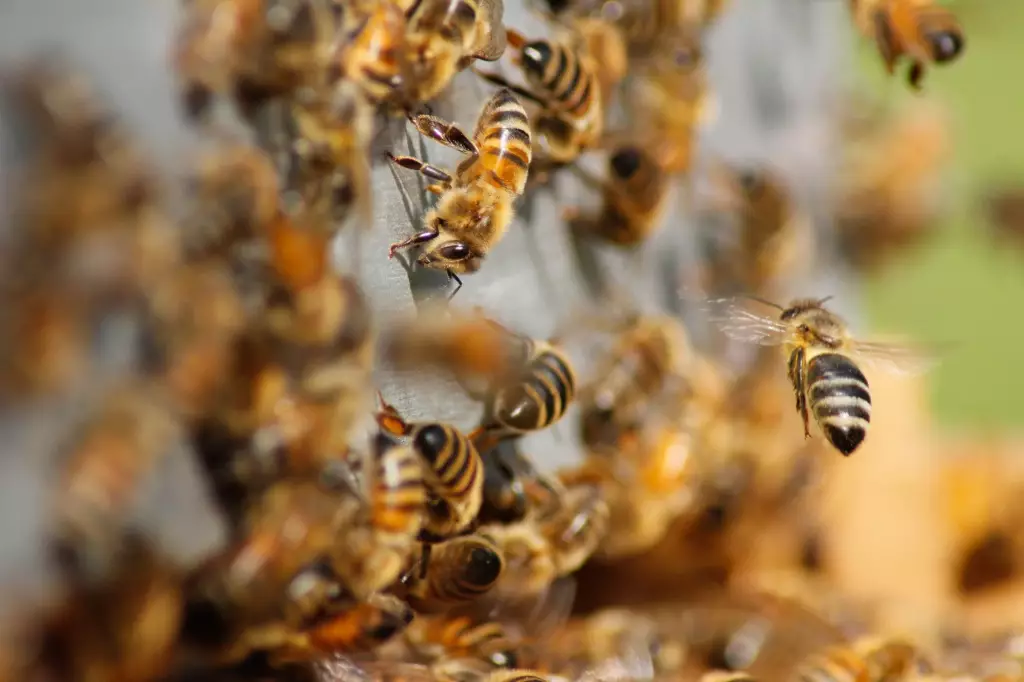
On the Ground
We may have unconsciously stepped on a beehive on the ground that caused us to panic, but in case you are out in the wild again, here are a few telltale signs to look out for so you know what to do next time.
- Increased bee activity: If you notice many bees flying around in a specific area, it could be a sign that they are building a hive in the ground.
- Holes in the ground: Look for small holes in the ground that may be the entrance to a beehive. These holes may be surrounded by small piles of dirt or debris.
- Buzzing sounds: If you hear a loud buzzing sound coming from the ground, it could be a sign that bees are building a hive.
- Visible bees: If you see bees coming in and out of a hole in the ground, it's a clear sign that they are building a hive.
If you suspect that bees are building a hive in the ground, it's important to contact a professional beekeeper or pest control expert to safely remove the hive.
On Trees
If you suspect that bees are nesting in a hollowed tree on your property, it's best to contact a professional beekeeper or pest control expert to safely remove the hive. To check if they are really building a nest, here are a few signs to look out for:
- Increased bee activity: If you notice an increase in bee activity around a hollowed tree, it could be a sign that bees are building a hive there. If you see a mass of bees lingering on a tree limb, most of the time, they are just swarming. Look for other signs such as wax buildup or honeycomb bits.
- Wax buildup: Bees use wax to build their hives, so if you see a buildup of wax around the entrance to the hollowed tree, it's a good indication that bees are nesting inside.
- Buzzing sound: If you hear a buzzing sound coming from the hollowed tree, it's likely that bees are inside and actively building their hive.
- Honeycomb: Bees build honeycombs to store their honey and raise their young. If you see a honeycomb inside the hollowed tree, it's a clear sign that bees are nesting there.
Upon confirming a beehive inside the tree, keep a safe distance from it and don’t try to touch or disturb the hive, as this could cause the bees to become agitated and attack you.
If you decide to remove a beehive from the tree, make sure to do it safely and humanely. Before doing so, read this article on How To Get Rid of a Beehive From a Tree.
Now, if you notice that the bees are not actively foraging, they may not be interested in making a hive in the tree. In this case, it’s best to leave them alone.
